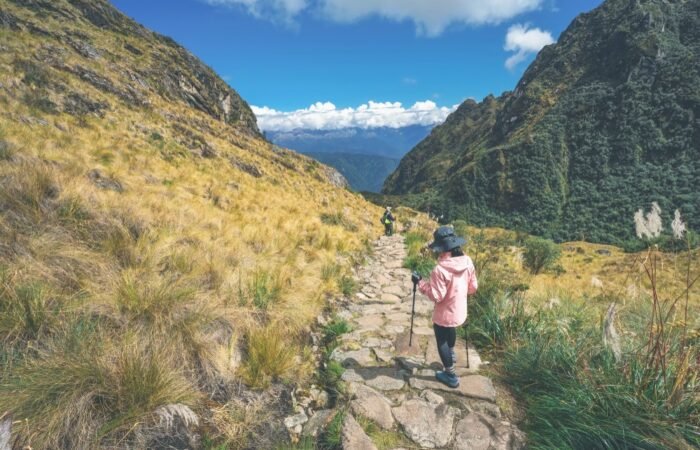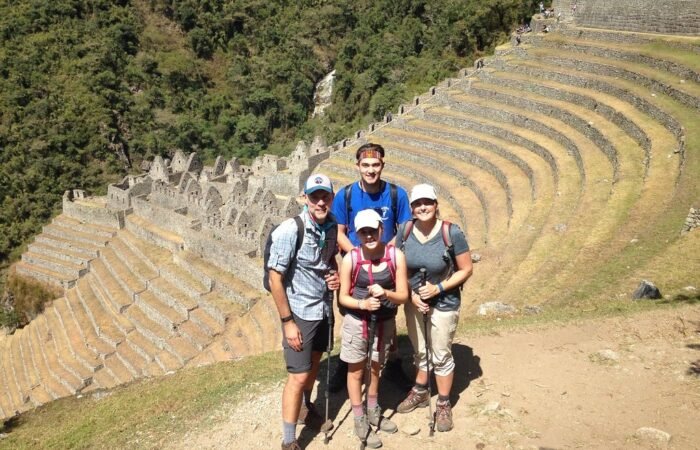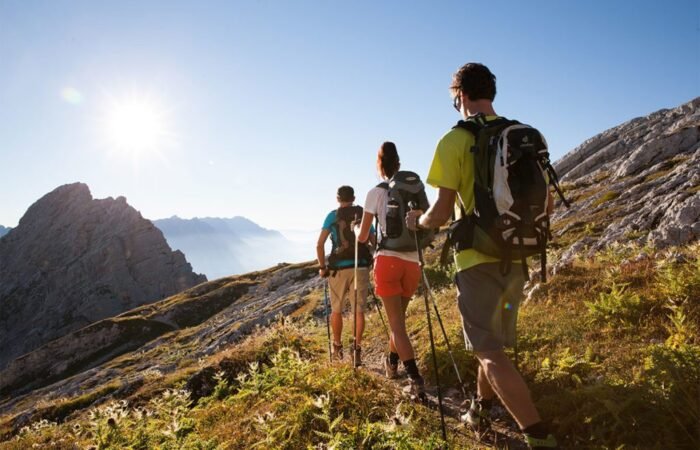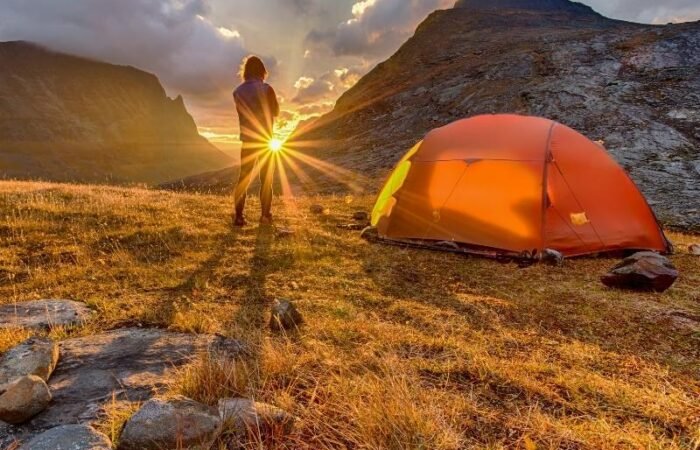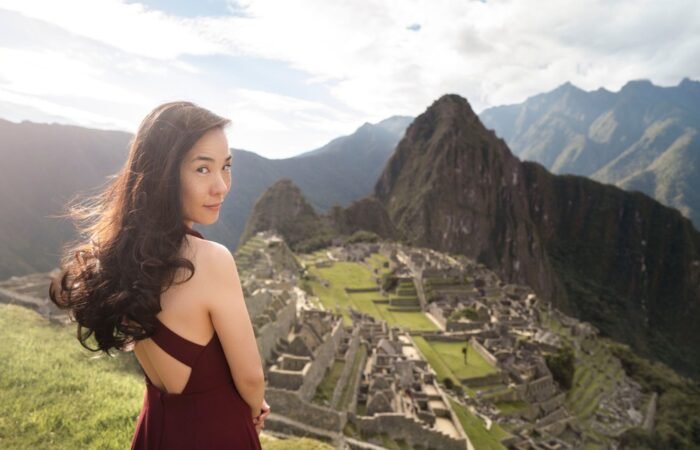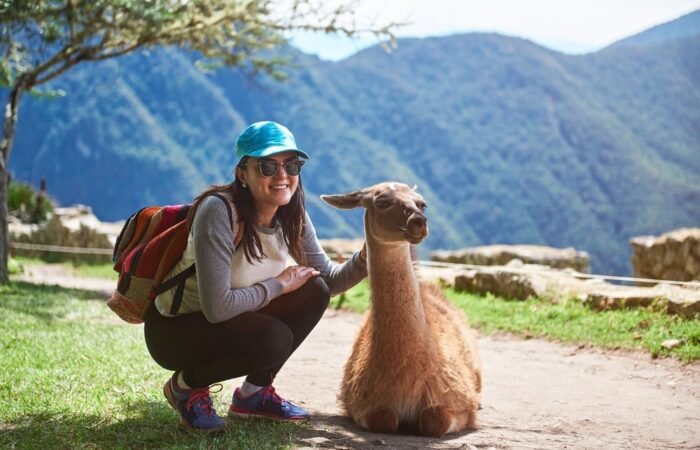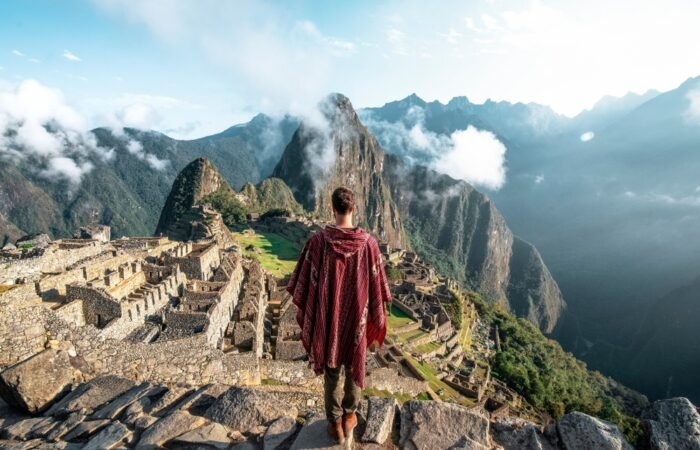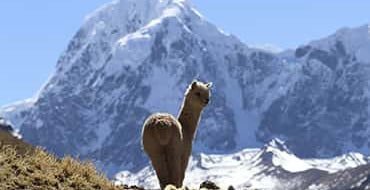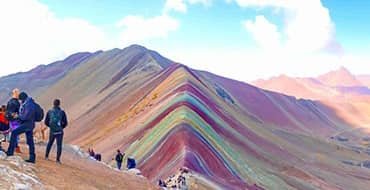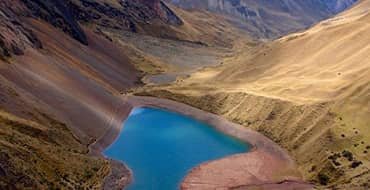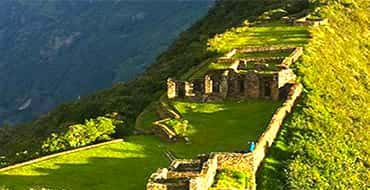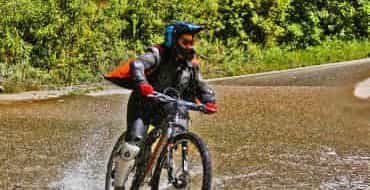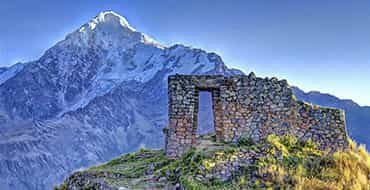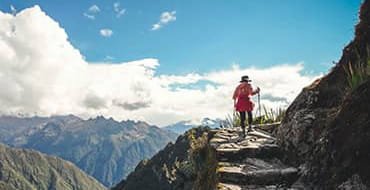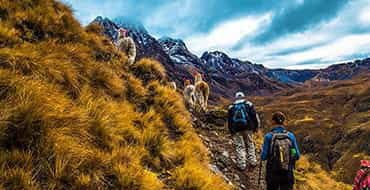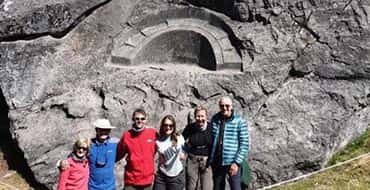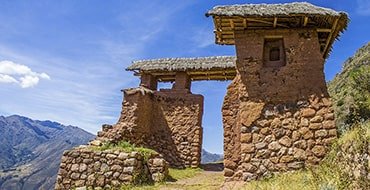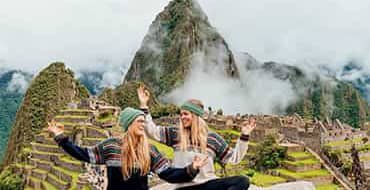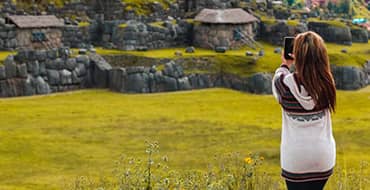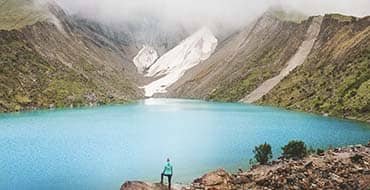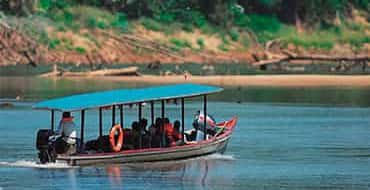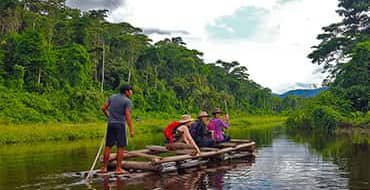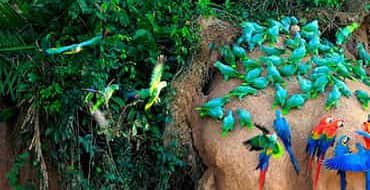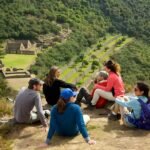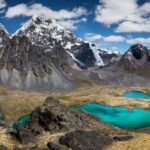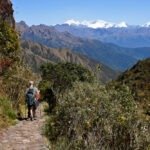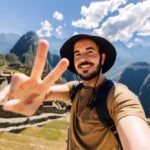
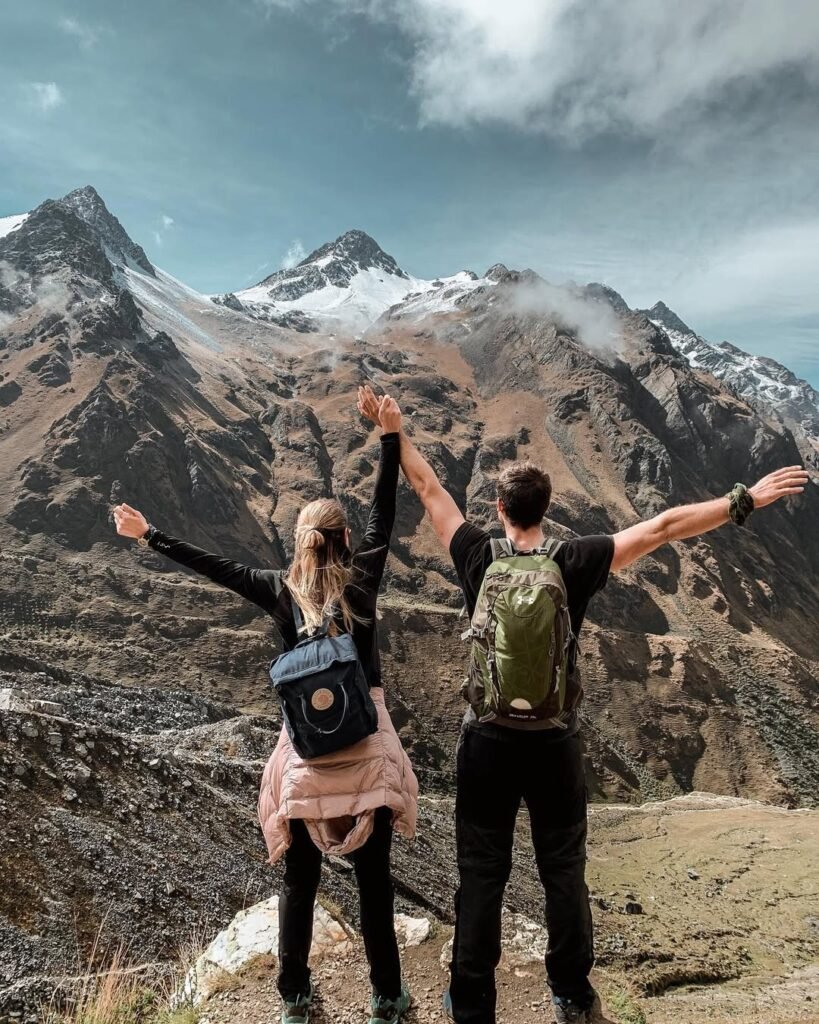
The Salkantay Trek
The Salkantay Trek, renowned for its breathtaking scenery and cultural richness, serves as an enticing alternative to the more traditional Inca Trail that leads to the historic site of Machu Picchu. This trekking route is not only a path through the awe-inspiring Andes mountains but also a journey that encapsulates the essence of Peruvian heritage and natural beauty.
This trek, which typically spans over five days, takes adventurers through diverse ecosystems and stunning landscapes, including snow-capped peaks, lush valleys, and high-altitude cloud forests. The Salkantay Mountain, reaching an impressive height of 6,271 meters (20,574 feet), stands as the trek’s namesake and a significant point of interest for trekkers, offering a majestic backdrop that captures the spirit of the Andes.
What makes the Salkantay Trek particularly appealing is not only its natural allure but also its cultural significance. The route is steeped in Incan history and local traditions, providing trekkers with opportunities to engage with indigenous communities and experience their rich customs. This interaction creates a deeper understanding of the Incan legacy and the ongoing cultural practices that persist in the region today.
Moreover, the Salkantay Trek is characterized by its relative tranquility in comparison to the bustling Inca Trail, making it a preferred choice for those seeking a more solitary experience amid nature. The absence of crowds allows for a deeper connection with the environment and permits trekkers to fully absorb the serene beauty that surrounds them.
In sum, the Salkantay Trek is a remarkable journey that combines stunning landscapes with cultural immersion, making it a highly recommended option for those looking to explore the beauty of Peru while following in the footsteps of the richly storied Incan civilization.
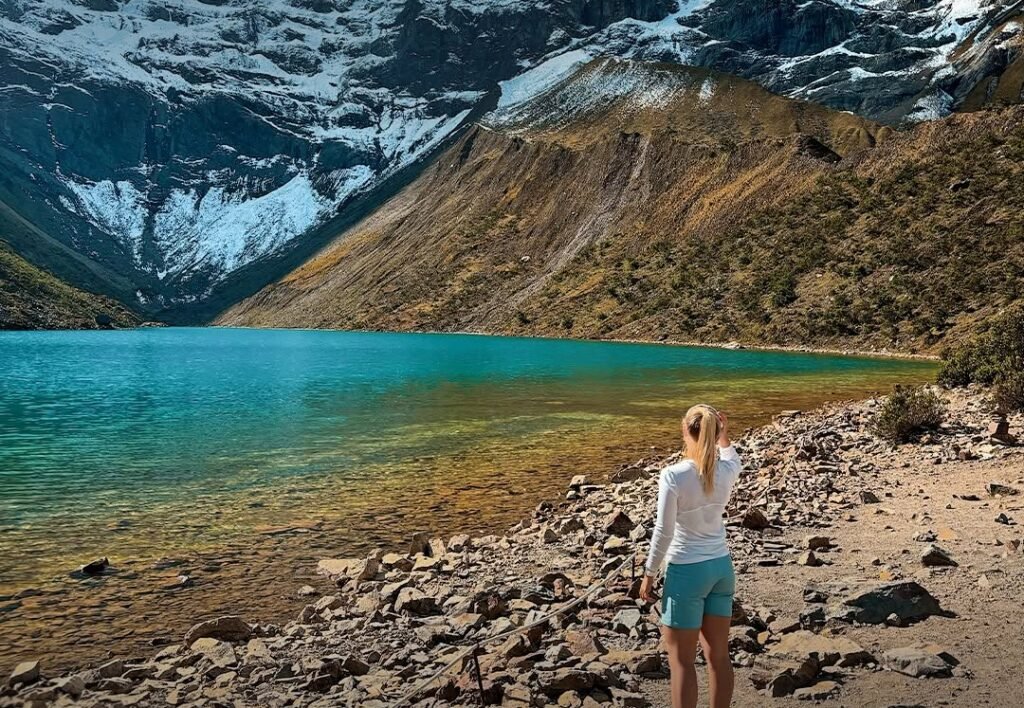
Best Time to Undertake the Salkantay Trek
The Salkantay Trek, renowned for its stunning views and diverse landscapes, is best experienced during specific times of the year. The optimal months to embark on this adventure generally fall between April and October, a period characterized by dry weather and favorable trekking conditions. This timeframe corresponds with the dry season in the Andes, where the likelihood of rain is significantly reduced. In contrast, the wet season runs from November to March, making trekking less enjoyable due to heavy rainfall, muddy paths, and potential landslides.
April and May mark the beginning of the dry season, during which temperatures are relatively mild, making it an ideal time for both novice and experienced trekkers. The skies are generally clear, providing breathtaking views of the majestic Salkantay Mountain, further enhancing the trekking experience. Additionally, with fewer tourists on the trails, trekkers can enjoy a more serene atmosphere, allowing for a deeper connection with nature.
As the dry season progresses into June, the weather remains stable, yet this month often sees a peak in tourist activity. Consequently, it is advisable to book accommodations and permits well in advance if planning a trek during this time. July and August are peak months, renowned for their spectacular scenery, although they tend to attract larger crowds. It is also essential to consider that nighttime temperatures may drop significantly, so proper gear is necessary for comfort.
Thus, while April to October is generally regarded as the ideal timeframe for the Salkantay Trek, planning your adventure for early in the dry season may provide a more personalized experience. Ultimately, timing your trek can significantly enhance your overall journey through this magnificent Peruvian landscape.

Salkantay Trek Routes and Itineraries
The Salkantay Trek offers various routes and itineraries, providing trekkers with options that cater to different preferences and experience levels. The most recognized route is the traditional 5-day trek, which combines stunning landscapes with cultural experiences. This itinerary covers approximately 74 kilometers and ascends to an altitude of 4,600 meters at the Salkantay Pass, making it a challenging yet immensely rewarding adventure.
Each day of the trek presents a unique set of experiences. On Day 1, trekkers typically embark from Mollepata, traversing picturesque villages and gradually gaining altitude. The distance covered is around 12 kilometers, setting a pace that will be crucial for the days that follow. The second day is the most strenuous, covering a distance of approximately 22 kilometers to reach the Salkantay Pass. Here, hikers are rewarded with unparalleled views of the towering Salkantay Mountain, immersing themselves in the raw beauty of the Andes.
Following the ascension, Day 3 descends into the lush greenery of the cloud forest, traversing about 18 kilometers to reach La Playa. This segment offers a striking contrast to the preceding landscapes, introducing trekkers to an array of flora and fauna unique to this environment. The fourth day continues to explore this rich biodiversity, leading to the charming town of Aguas Calientes, located just a stone’s throw away from Machu Picchu.
For those looking for variations, 7-day itineraries are also available, which may include additional highlights such as visiting the Llactapata ruins or engaging in more immersive cultural interactions with local communities. Regardless of the chosen route, the Salkantay Trek requires good physical condition and proper acclimatization, ensuring a safe and enjoyable experience.
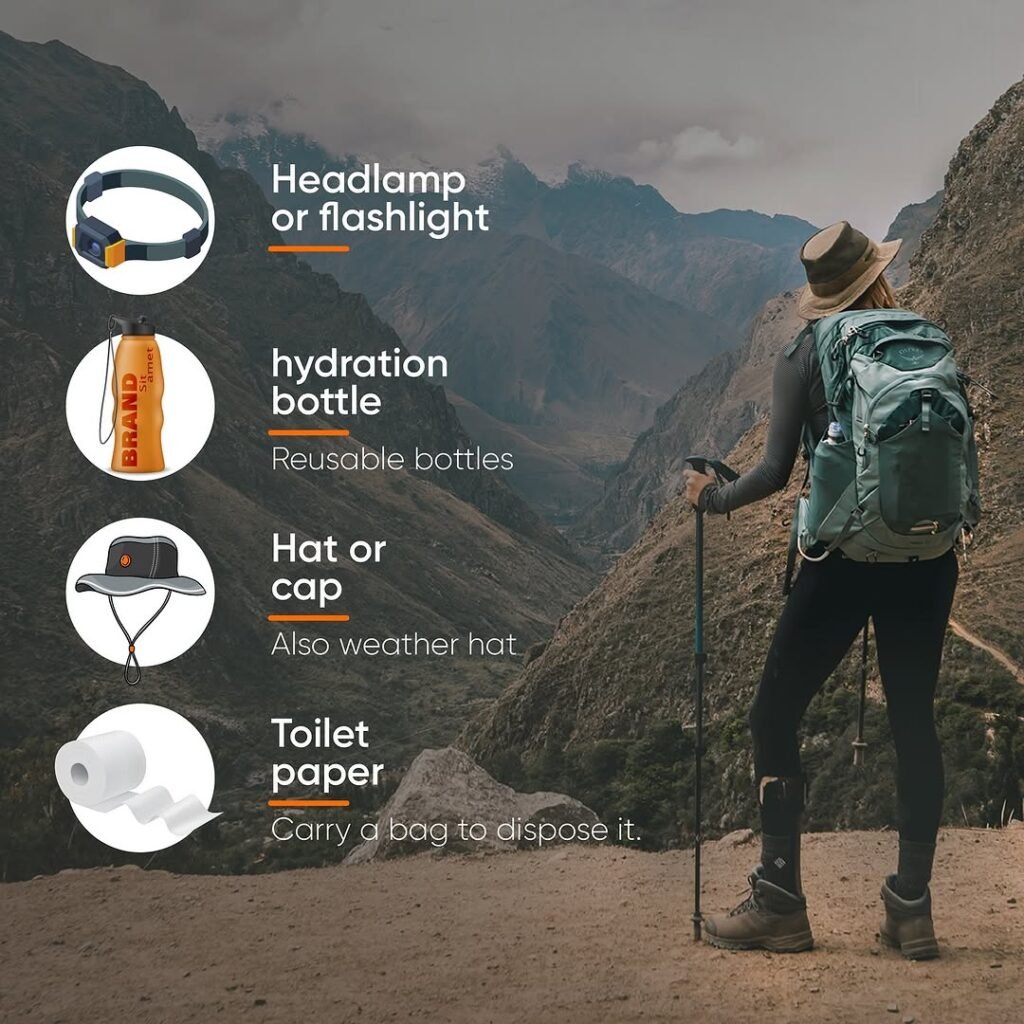

What to Pack for the Salkantay Trek
Preparing for the Salkantay Trek demands careful consideration regarding what items to include in your packing list. The right clothing and gear are essential to ensuring not only your comfort but also your safety in the varying environmental conditions you will encounter. First and foremost, layering is crucial due to the significant temperature changes throughout the day. Begin with a moisture-wicking base layer, followed by insulating layers, such as fleece or down jackets, and finish with a waterproof and windproof outer layer to protect against precipitation and wind.
In addition to clothing, sturdy and comfortable trekking boots are vital for navigating the rugged terrain. Investing in high-quality hiking socks can also prevent blisters and enhance overall comfort. A well-fitted backpack should be included, preferably one that can accommodate a day’s worth of supplies, including water and snacks. Hydration is vital while trekking in the high altitude of the Andes; therefore, consider packing a hydration system or water bottles that allow you to easily access hydration on the move.
Personal essentials should not be overlooked. Always include a first aid kit, sunscreen, hats, and sunglasses, as the sun can be intense at high altitudes. Trekking poles can provide additional stability and reduce strain on your knees during challenging descents. Moreover, it is prudent to pack some snacks such as energy bars or dried fruit to maintain your energy levels. The weather can be unpredictable, so including a lightweight rain poncho and extra layers can be invaluable. As you prepare for the adventure, consider these packing essentials to ensure a successful Salkantay Trek experience.


Physical Preparation and Fitness for Trekking
Preparing physically for the Salkantay Trek is vital, as the journey involves challenging terrain and varying elevations. To undertake this expedition successfully, it is essential to develop endurance, strength, and acclimatization to high altitudes. A well-structured training regimen can significantly enhance your trekking experience and ensure that you stay fit throughout the journey.
Endurance training is crucial for the Salkantay Trek, as participants typically hike for several hours each day. Begin by incorporating long-distance walks or hikes into your routine, gradually increasing the duration and intensity. Aim for at least three to five long hikes per week, targeting distances of 5 to 10 miles. This will help condition your legs and build cardiovascular endurance, lending strength to your body during steep ascents and descents.
Strength training should also be an integral part of your preparation. Focus on exercises that strengthen your core, legs, and hips, as these muscle groups are heavily utilized while trekking. Incorporate squats, lunges, and step-ups into your workouts, along with upper body exercises like push-ups and rows. Resistance training two to three times a week will enhance your overall stability and strength, allowing you to carry your pack with ease.
Acclimatization to high altitudes is another critical aspect of physical preparation. If possible, spend time at higher elevations before your trek to allow your body to adapt. This might include short trips to mountainous areas or even using a high-altitude simulation mask during your training sessions. Additionally, stay adequately hydrated and maintain a balanced diet rich in carbohydrates, which can help fuel your body for sustained energy levels during the trek.
Ultimately, a combination of endurance, strength training, and proper acclimatization will prepare you comprehensively for the Salkantay Trek. By following a consistent fitness routine, you can enhance your overall trekking experience and tackle the challenges of the route with confidence.


Guided vs. Self-Guided Trekking
The Salkantay Trek offers two primary trekking options: guided and self-guided. Each choice presents unique advantages and potential drawbacks, making it essential for trekkers to assess their preferences and experience levels before embarking on this journey.
Choosing a guided trek generally ensures a more structured experience. Guided treks often include experienced local guides who possess in-depth knowledge of the Salkantay region. This expertise enhances safety, as these guides are trained in first aid and are well-acquainted with the terrain, weather conditions, and potential hazards. Furthermore, they can navigate difficult routes, allowing trekkers to focus on the enjoyment of the scenery rather than navigation challenges. Additionally, a guided experience often provides valuable cultural education, as guides share insights about the local communities, flora, and fauna along the route.
On the other hand, self-guided trekking on the Salkantay allows for greater flexibility and an opportunity for personal exploration. Trekkers who choose this path can create their own itineraries, allowing for spontaneous stops to absorb the surrounding natural beauty. This option may also appeal to more experienced trekkers who are comfortable with map reading and navigation. However, self-guided trekkers must consider their safety, particularly in emergency scenarios where assistance may be less readily available. The reliance on personal skills for navigation increases the risk of getting lost or encountering hazardous conditions.
Cost implications also play a significant role in this decision. Guided treks generally have higher upfront costs, reflecting the services and resources provided. In contrast, self-guided trekking may save money on guide services but could incur additional expenses for permits, gear, and accommodations. Each option ultimately aligns with differing priorities, skill levels, and budget considerations, making it vital for trekkers to evaluate what suits them best before tackling the Salkantay Trail.

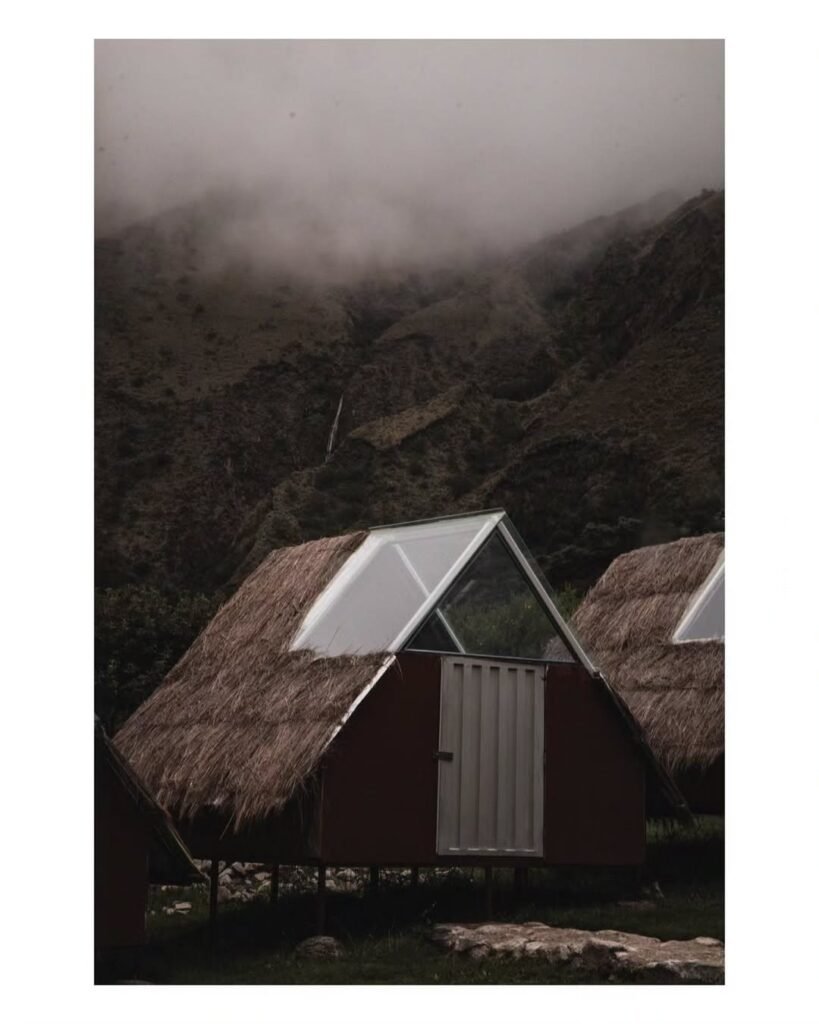
Accommodation Options Along the Salkantay Trek
Choosing the right accommodation is crucial for an enjoyable experience on the Salkantay Trek. Travelers have a range of options available, catering to various preferences and budgets. The accommodation types can broadly be divided into luxury lodges, comfortable guesthouses, and basic campsites, each providing distinct experiences along this striking route.
Luxury lodges offer the most luxurious experience with amenities such as private rooms, gourmet meals, and serene settings, often featuring panoramic views of the surrounding mountains. These lodges provide a unique opportunity to enjoy the beauty of the Salkantay region without sacrificing comfort. Many of them allow for advance booking, so it is advisable to reserve your spot well ahead of your trip, especially during peak trekking seasons.
For those seeking a balance between comfort and affordability, slightly elevated guesthouses present a viable option. These guesthouses are often located in small villages, facilitated by local families. Travelers can expect warm hospitality, shared facilities, and, in some cases, meals prepared with fresh local ingredients. Guesthouses can provide a more immersive cultural experience for hikers who prefer a familiar yet hospitable environment.
Lastly, basic campsites appeal to those who wish to connect more closely with nature. While these sites typically offer fewer amenities, they allow trekkers to camp under the stars and fully immerse themselves in the breathtaking landscapes of the Andes. Campers will need to bring their own tents or rent them through trekking companies, ensuring they are equipped for any weather conditions encountered along the trail.
Regardless of the choice made, it’s important to plan accommodations thoughtfully to enhance the overall trekking experience. Whether opting for a luxe stay or simply pitching a tent, the Salkantay Trek has something for everyone. Each lodging option provides unique advantages, ensuring that all trekkers have memorable nights after exhilarating days on the trail.


What to Expect in Terms of Food and Nutrition
The Salkantay Trek offers a unique culinary experience, where trekkers can enjoy a blend of local Peruvian cuisine and traditional trekking fare. Meals are typically prepared by skilled cooks who accompany the trekking groups, ensuring that food is not only nutritious but also flavorful. Breakfast might consist of hearty options such as oatmeal, pancakes, or eggs, providing the necessary fuel for the day’s hike. Lunch often includes a selection of sandwiches, salads, and local fruits, while dinner may feature rice, potatoes, or quinoa served alongside meat vegetables, prepared with Andean spices.
Dietary considerations are crucial when embarking on the Salkantay Trek. Trekkers with specific dietary restrictions or preferences, such as vegetarian, vegan, or gluten-free diets, should communicate these requirements in advance. Most trekking agencies are willing to accommodate these needs, ensuring that every participant receives adequate nutrition. It is advisable to carry some snacks, such as energy bars, nuts, and dried fruits, to maintain energy levels between meals, especially during long stretches of hiking.
Hydration is another essential aspect of maintaining well-being on the trek. It is recommended to drink at least three litres of water daily to prevent dehydration, particularly at higher altitudes. Many trekking groups supply boiled water, but trekkers should consider carrying a water purification system or tablets for safety. Additionally, drinking herbal teas and electrolyte-rich beverages can enhance hydration levels and aid in recovery. Recognizing the importance of energy and nutrition will greatly enhance the trekking experience, making it enjoyable and thoroughly rewarding.
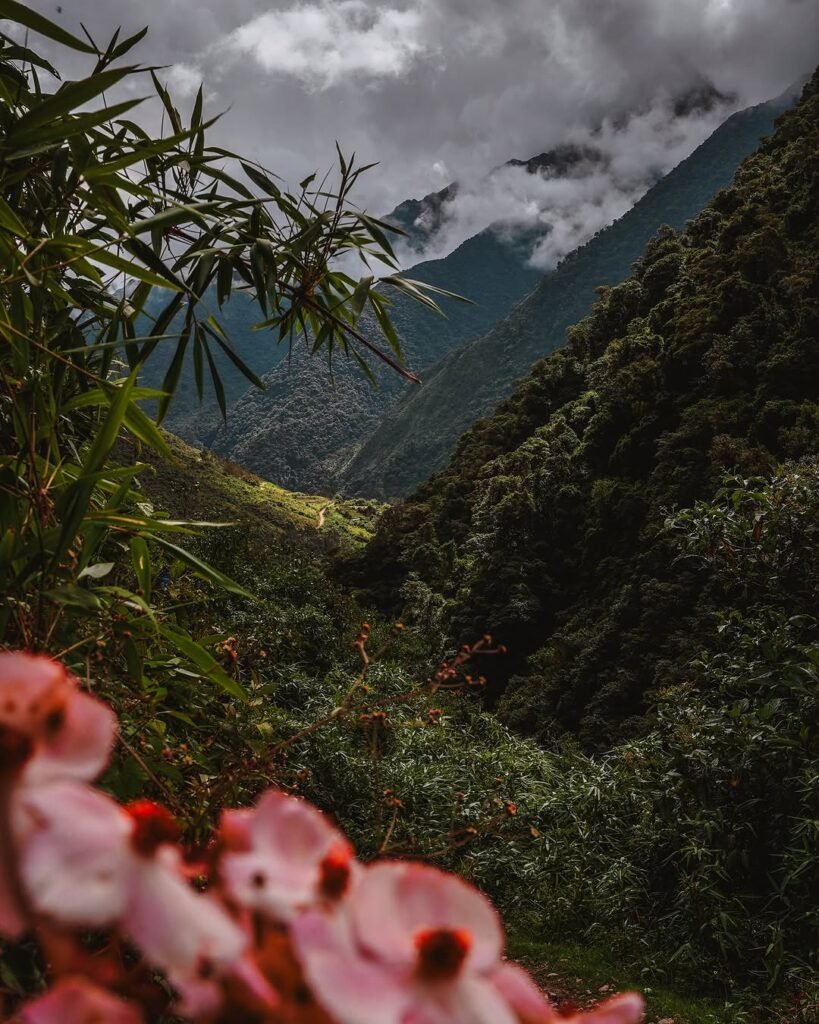
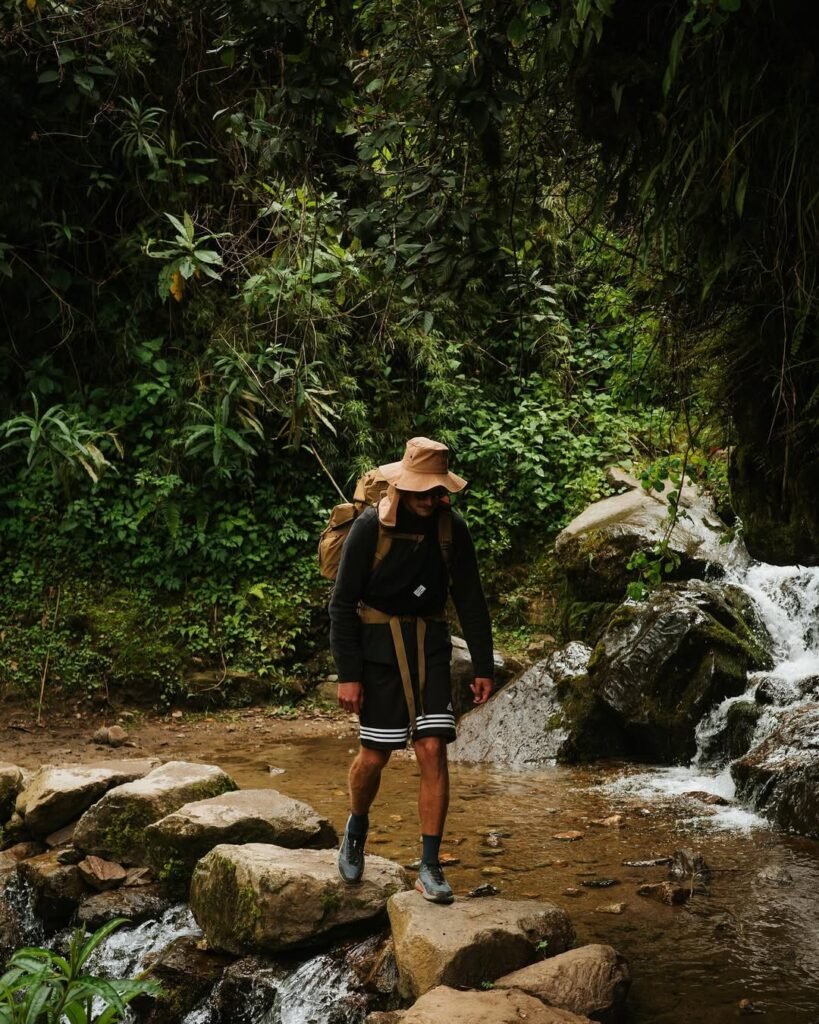
Altitude Sickness and Safety Tips
When embarking on the Salkantay Trek, one of the most crucial factors to consider is acclimatization to high altitude. This trek reaches elevations of up to 4,600 meters (15,091 feet), making altitude sickness a common concern among trekkers. Altitude sickness, also known as acute mountain sickness (AMS), can affect anyone, regardless of age or fitness level. The symptoms typically manifest at altitudes above 2,500 meters (8,200 feet) and include headaches, nausea, dizziness, and fatigue.
To mitigate the risk of altitude sickness, gradual acclimatization is essential. It is advisable to spend a few days at a higher elevation before starting the trek. Additionally, hikers should stay hydrated, consuming sufficient fluids to assist the body in adjusting to thin air. Moreover, maintaining a balanced diet and avoiding alcohol and strenuous activity during initial acclimatization can significantly help in preventing AMS.
Being aware of the symptoms is equally important. Mild cases of altitude sickness can be managed by descending to a lower elevation, resting, and staying hydrated. In more severe instances, medical attention may be necessary. Trekkers should not ignore severe symptoms such as confusion, shortness of breath, or persistent vomiting, as these can indicate life-threatening conditions like high altitude pulmonary edema (HAPE) or high altitude cerebral edema (HACE).
Preparing for the trek involves not only physical training but also mental readiness. Understanding the challenge posed by high altitudes can foster a positive mindset. Additionally, safety is paramount; carrying a basic first-aid kit and being informed about rescue protocols contribute to a secure trekking experience. Ultimately, planning, preparation, and awareness are key to enjoying the stunning landscapes of the Salkantay Trek while minimizing the risks associated with altitude sickness.
